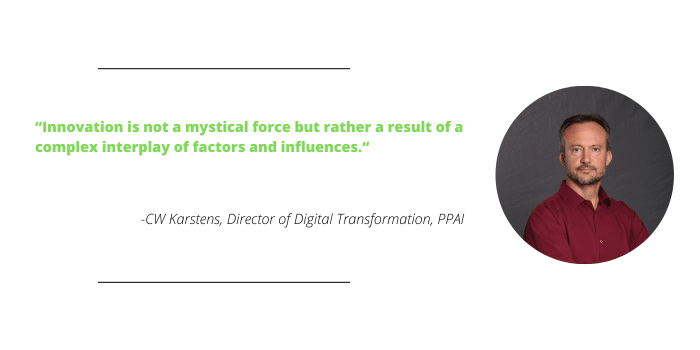In my last column, I discussed the different forms of innovation and the innovation process. Both of those are dependent on innovative ideas.
That leads to the question: Where do innovative ideas come from? Innovation is not a mystical force but rather a result of a complex interplay of factors and influences.
Observation And Everyday Life
Innovation often begins with a simple act: observation. Everyday life is rife with opportunities for keen observers to identify problems, inefficiencies and unmet needs. Innovators who start with the world around them, paying attention to the inconveniences they face or gaps in the market, can come up with inventive solutions.
For instance, the ride-sharing industry emerged from the observation that many people needed convenient, affordable transportation options. Listening to challenges and inconveniences that employees and co-workers deal with can identify the need, and finding a solution is the innovation.
Cross-Pollination Of Ideas
Innovation is not always about creating something entirely new – sometimes it involves combining existing ideas and concepts in fresh and unexpected ways. Steve Jobs, co-founder of Apple, was a master of this approach. He famously said, “Creativity is just connecting things.”
By synthesizing ideas from diverse fields or industries, innovators can create unique and transformative solutions. Having worked in the industries of manufacturing, telecommunications, financial technology for healthcare payments and now the promo industry, I hope to bring innovation through a blend of solutions I have experienced.

Collaborative Efforts
Many innovations stem from collaborative efforts. Brainstorming sessions, interdisciplinary teams and collective problem-solving can spark creativity and result in groundbreaking ideas. Silicon Valley is a prime example of how a concentration of talented individuals from various fields working together has led to numerous technological breakthroughs. The PPAI Technology Committee is a great example of collaboration in the promo industry.
Disruption And Necessity
Disruption often goes hand in hand with innovation. When existing solutions become outdated or ineffective, necessity becomes the mother of invention. Innovators identify new ways to solve problems, sometimes through entirely different approaches or technologies. The rise of digital photography, for example, disrupted the film industry, forever changing how we capture and share images.
Personal Experience And Passion
Innovators who are deeply passionate about a particular field or problem often find inspiration in their personal experiences. They may have faced a challenge or recognized an unmet need that motivates them to find a solution. These personal connections to the problem can fuel a relentless drive to innovate and make a difference.
Research And Development
Innovation often relies on rigorous research and development efforts. Scientists, engineers and inventors dedicate their lives to understanding complex problems, conducting experiments and discovering new solutions. Breakthroughs like the discovery of antibiotics or the development of the internet are products of extensive research.
Environmental And Societal Trends
Innovation is closely linked to environmental and societal trends. Climate change concerns, the desire for sustainable practices and changing consumer preferences drive innovations in clean energy, eco-friendly products and social enterprises. Innovators who are attuned to these trends can capitalize on emerging markets and pressing global issues.
Serendipity And Accidental Discoveries
Sometimes, innovation emerges from serendipity and accidental discoveries. Iconic inventions like penicillin and the microwave oven were not intentionally sought but stumbled upon by chance. These unplanned breakthroughs underscore the unpredictable nature of innovation.
Innovation is a multifaceted phenomenon with roots that extend into various aspects of human experience. Ideas can spring from observation, collaboration, necessity and even serendipity. The diverse sources of innovation remind us that everyone, regardless of background or profession, can contribute to innovation.
The most successful innovators are often those who embrace the world with open eyes, are unafraid to cross-pollinate ideas, collaborate with others and adapt to changing circumstances. By understanding the myriad sources of innovation, we can foster a culture that encourages creativity and problem-solving, ensuring that the wellspring of ideas continues to flow and enrich our lives.
Upcoming articles will cover ideas around building a culture of innovation, identifying common pitfalls during innovation and how to avoid them, measuring success of innovation and innovation that can be applied to your business.
Karstens is PPAI’s director of digital transformation.


